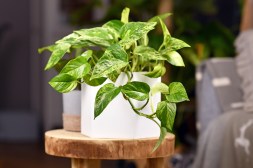Common Mistakes in Sustainable Gardening and How to Avoid Them
Sustainable gardening is an eco-friendly approach that not only helps in conserving resources but also promotes biodiversity. However, like any practice, it’s easy to make mistakes that can hinder your efforts. In this article, we’ll explore common mistakes made by gardeners who seek sustainability and provide tips on how to avoid them.
Overlooking Soil Health
One of the most significant mistakes in sustainable gardening is neglecting soil health. Healthy soil is the backbone of a productive garden; it provides nutrients, retains moisture, and supports beneficial microorganisms. To avoid this mistake, regularly test your soil for pH and nutrient levels, and incorporate organic matter such as compost or aged manure to enhance its structure and fertility.

Ignoring Native Plant Species
Another common pitfall is opting for non-native plants that may not thrive in your local environment. While exotic plants might look appealing, they often require more water and maintenance than native species. To foster a sustainable garden, choose plants that are indigenous to your area; they will be better adapted to local conditions and support local wildlife.
Using Chemical Pesticides
Many gardeners resort to chemical pesticides without realizing their detrimental impact on ecosystems. These substances can harm beneficial insects like bees and butterflies while disrupting the balance of nature in your garden. Instead of chemicals, consider integrated pest management techniques such as companion planting or introducing natural predators like ladybugs to control pest populations naturally.
Overwatering Plants
It’s easy to think more water equals healthier plants; however, overwatering can lead to root rot and other issues that compromise plant health. Sustainable gardening practices emphasize water conservation—installing rain barrels or using drip irrigation systems can help deliver moisture directly where it’s needed without wastefully flooding the area.
Neglecting Seasonal Changes
Finally, failing to adapt your gardening practices with the seasons can lead you astray from sustainability goals. Different times of year require specific planting schedules, maintenance routines, and conservation methods—don’t forget about mulching in summer or preparing for frost in fall. By staying attuned with seasonal changes, you’ll ensure your garden remains productive year-round while minimizing resource use.
By being mindful of these common mistakes in sustainable gardening—and actively working to avoid them—you’ll not only create a flourishing garden but also contribute positively toward environmental stewardship. Remember: every small change counts towards a larger impact.
This text was generated using a large language model, and select text has been reviewed and moderated for purposes such as readability.


